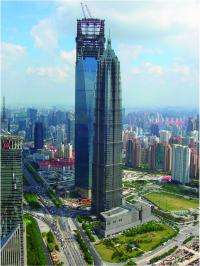Anthropocene continues to spark scientific debate

How have humans influenced Earth? Can geoscientists measure when human impacts began overtaking those of Earth's other inhabitants and that of the natural Earth system? Responding to increasing scientific recognition that humans have become the foremost agent of change at Earth's surface, organizers of this GSA technical session have brought together speakers and poster presentations from a variety of sources in order to answer these questions and define the "Geomorphology of the Anthropocene."
"Anthropocene" is a fairly new term (first used ca. 2002 by Paul Crutzen) now being applied to the current global environment and its domination by human activity (see J. Zalasiewicz et al.'s 2008 GSA Today article "Are we now living in the Anthropocene" [v. 18, no. 2, p. 4]). This "era" or "epoch" spans a yet-undetermined but so far brief (in geologic terms) time scale potentially marking the end of the Holocene epoch.
Session organizers Anne Jefferson of Kent State University, Karl Wegmann of North Carolina State University, and Anne Chin of the University of Colorado Denver have gathered presentations addressing human interactions with Earth's systems. Research studies span a range of temporal and spatial scales and investigate a variety of influences, including the effects of indigenous culture as well as dams and cities.
Chin says that part of the research is spurred by "the difficulty of finding any place (no matter how 'pristine') where the landscape hasn't been affected by human activities." She cites the U.S. National Research Council's "Grand Challenge" in Landscapes on the Edge: New Horizons for Research on Earth's Surface (2010) to determine how Earth's surface may evolve in the Anthropocene.
Chin also points to the intensification of debate over "Anthropocene" and the time frame it encompasses as scientists, policymakers, the media, and the public become increasingly aware of the term. A goal of this session is to address the debate and add a greater base of scientific understanding to round out the popularity of the idea.
Three Geological Society of American (GSA) specialty divisions cosponsor this session: the GSA Quaternary Geology and Geomorphology Division, the GSA Geology and Society Division, and the GSA Archaeological Geology Division, thus bringing to bear a multidisciplinary perspective to the problem. Talks include "An early Anthropocene analog: Ancient Maya impacts on the Earth's surface"; "Removing streams from the landscape: Counting the buried streams beneath urban landscapes"; and Anthropogenic influences on rates of coastal change."
Papers from this session will be compiled into a special issue of Anthropocene, a new journal launching in 2013 by Elsevier, devoted to addressing one of the grand challenges of our time.
Provided by Geological Society of America


















